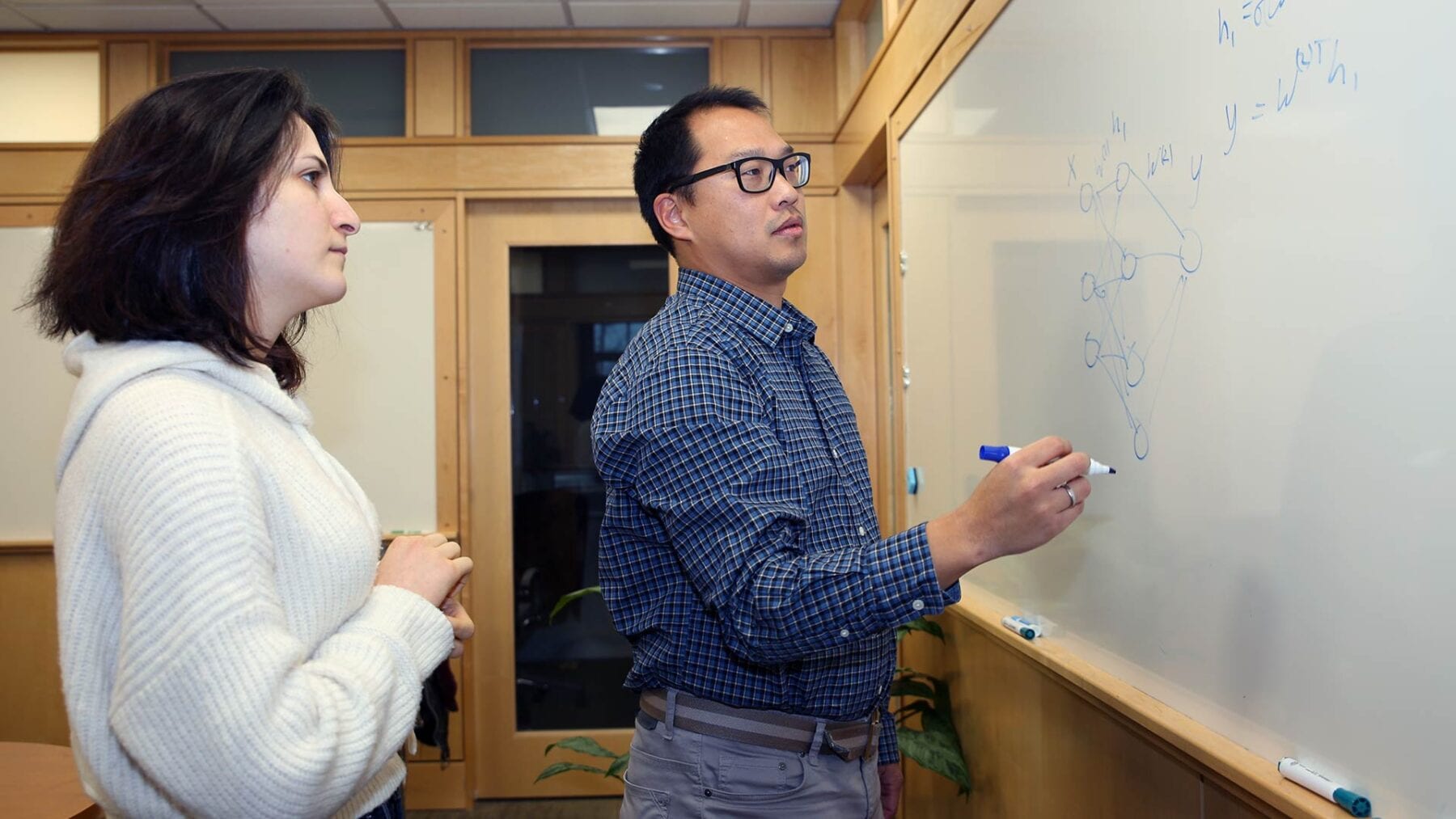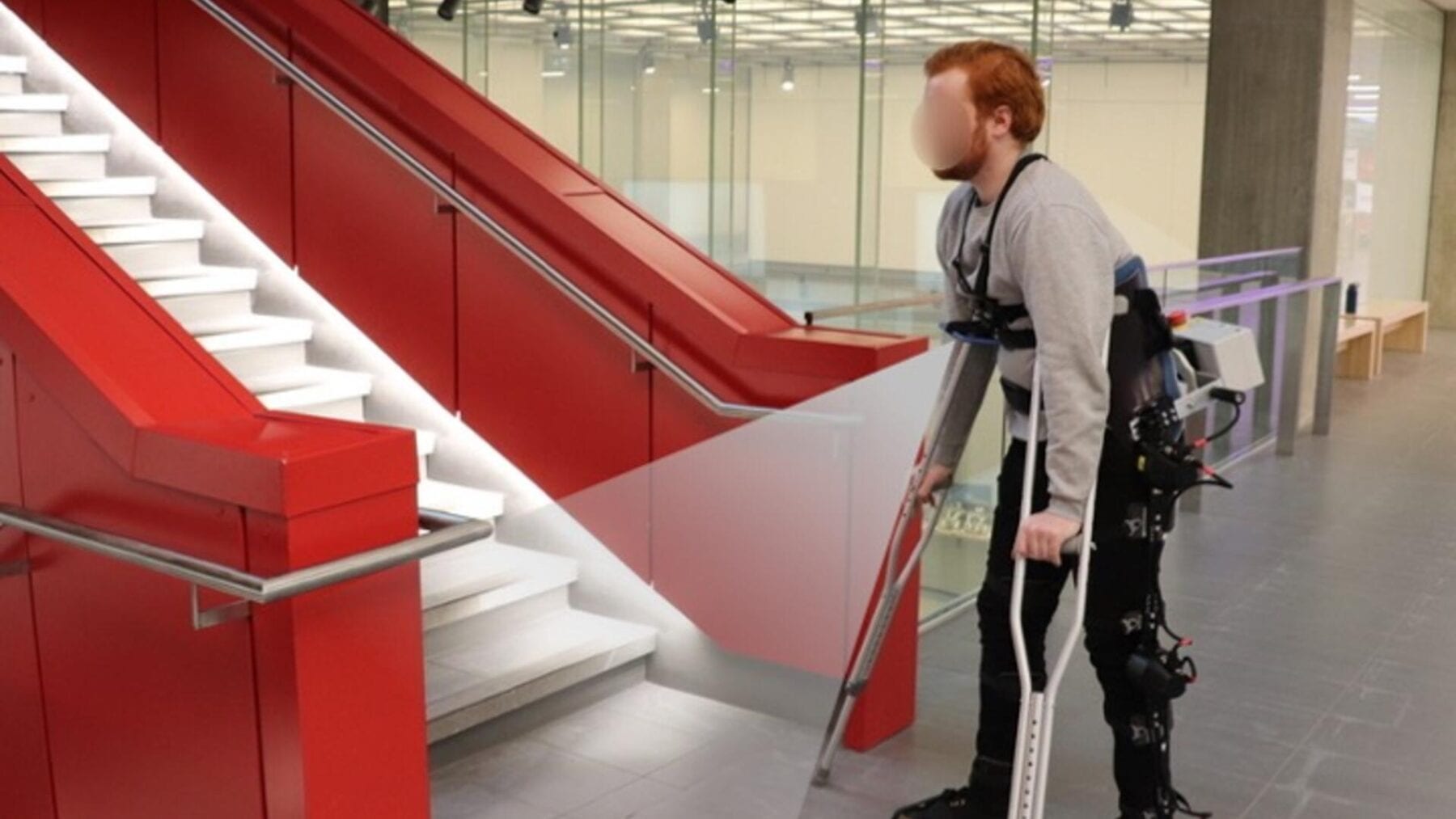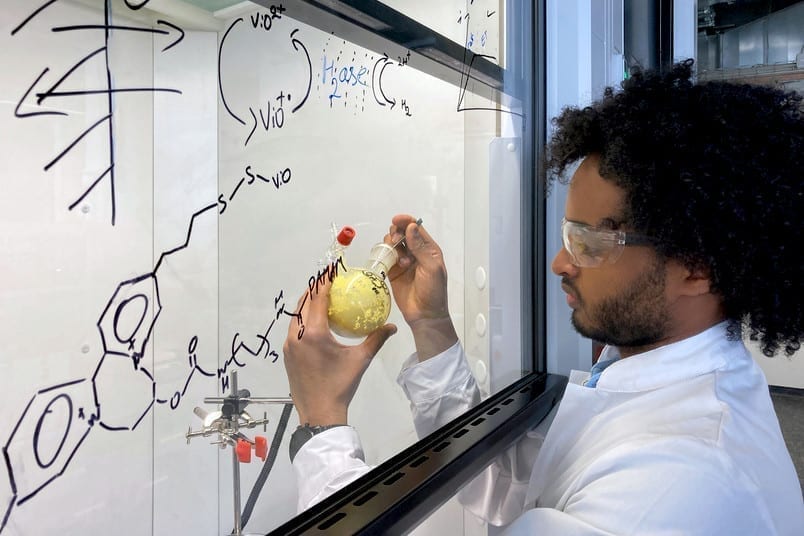
Cold Spring Harbor Laboratory Assistant Professor Peter Koo in his lab with graduate student Shushan Toneyan. Koo’s team studies how machine learning AI called deep neural networks (DNNs) work. He developed a new method for investigating how these DNNs learn and predict the importance of certain patterns in RNA sequences.
Artificial intelligence (AI) learning machines can be trained to solve problems and puzzles on their own instead of using rules that we made for them. But often, researchers do not know what rules the machines make for themselves. Cold Spring Harbor Laboratory (CSHL) Assistant Professor Peter Koo developed a new method that quizzes a machine-learning program to figure out what rules it learned on its own and if they are the right ones.
Computer scientists “train” an AI machine to make predictions by presenting it with a set of data. The machine extracts a series of rules and operations—a model—based on information it encountered during its training. Koo says:
“If you learn general rules about the math instead of memorizing the equations, you know how to solve those equations. So rather than just memorizing those equations, we hope that these models are learning to solve it and now we can give it any equation and it will solve it.”
Koo developed a type of AI called a deep neural network (DNN) to look for patterns in RNA strands that increase the ability of a protein to bind to them. Koo trained his DNN, called Residual Bind (RB), with thousands of RNA sequences matched to protein binding scores, and RB became good at predicting scores for new RNA sequences. But Koo did not know whether the machine was focusing on a short sequence of RNA letters—a motif—that humans might expect, or some other secondary characteristic of the RNA strands that they might not.
Koo and his team developed a new method, called Global Importance Analysis, to test what rules RB generated to make its predictions. He presented the trained network with a carefully designed set of synthetic RNA sequences containing different combinations of motifs and features that the scientists thought might influence RB’s assessments.
They discovered the network considered more than just the spelling of a short motif. It factored in how the RNA strand might fold over and bind to itself, how close one motif is to another, and other features.
Koo hopes to test some key results in a laboratory. But rather than test every prediction in that lab, Koo’s new method acts like a virtual lab. Researchers can design and test millions of different variables computationally, far more than humans could test in a real-world lab.
“Biology is super anecdotal. You can find a sequence, you can find a pattern but you don’t know ‘Is that pattern really important?’ You have to do these interventional experiments. In this case, all my experiments are all done by just asking the neural network.”
Original Article: Making AI algorithms show their work
More from: Cold Spring Harbor Laboratory
The Latest Updates from Bing News & Google News
Go deeper with Bing News on:
Artificial intelligence rules transparency
- How to stop the artificial intelligence apocalypse: David Brin, Uplift author
Uplift and The Postman author David Brin has devised a clever plan to keep AIs from going rogue. But can we pull it off?
- America’s spies preparing new rules for using AI and data
The U.S. intelligence community is crafting rules for its use of artificial intelligence and data ... cars and other devices. Transparency and privacy Mr. Barrett said the intelligence community’s ...
- Advancing AI Transparency: The Rise and Challenges of Watermarking Technology for Identifying AI-Generated Content
With the rising use of artificial intelligence-written text ... creating an approximate model of the watermarking rules applied by a given AI model using only API access to the AI language model with ...
- The EU's Approach To Regulating Artificial Intelligence
Regulating artificial intelligence (AI) is crucial for several reasons, primarily for ethical, safety and societal considerations. The rapid advance ...
- JAMS Issues Rules Governing Disputes Involving Artificial Intelligence Systems
Staying up-to-date with these changes has become as fundamental to litigation as other procedural rules. The Artificial Intelligence Group at Ballard ... such as questions of liability, algorithmic ...
Go deeper with Google Headlines on:
Artificial intelligence rules transparency
[google_news title=”” keyword=”artificial intelligence rules transparency” num_posts=”5″ blurb_length=”0″ show_thumb=”left”]
Go deeper with Bing News on:
Global Importance Analysis
- South Africa Will Be President of the G20 in 2025 - Two Much-Needed Reforms It Should Drive [analysis]
South Africa will play an important international role in 2025 as president of the G20. The G20 is a group of 19 countries as well as the African Union and the European Union. Between them they ...
- Emergence of global leader: New era for Azerbaijani foreign policy
Ever since the First Karabakh War and the occupation of its territories, Azerbaijan has faced the challenge of integrating itself into an international community that was not always swift to reiterate ...
- Gallup report: US ahead of China in global leadership approval
Global approval of U.S. leadership is higher than China's, according to a Gallup analysis Monday. The report says that although more countries have a ...
- Results: Liberty Global Ltd. Exceeded Expectations And The Consensus Has Updated Its Estimates
Investors in Liberty Global Ltd. (NASDAQ:LBTY.A) had a good week, as its shares rose 2.4% to close at US$16.74 following the release of its first-quarter results. Liberty Global beat expectations by 4 ...
- EU Methane Rules: Impact for Global LNG Exporters
The European Union is finalizing methane regulations covering domestic production and imports of fossil fuels. These rules have important implications for global gas suppliers, including U.S. LNG ...
Go deeper with Google Headlines on:
Global Importance Analysis
[google_news title=”” keyword=”Global Importance Analysis” num_posts=”5″ blurb_length=”0″ show_thumb=”left”]










